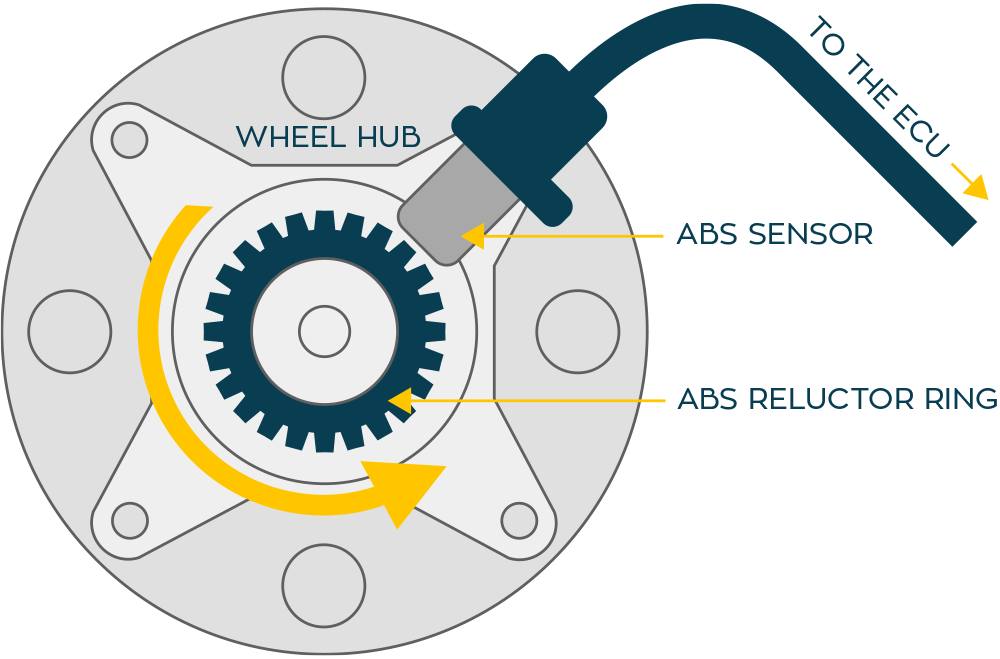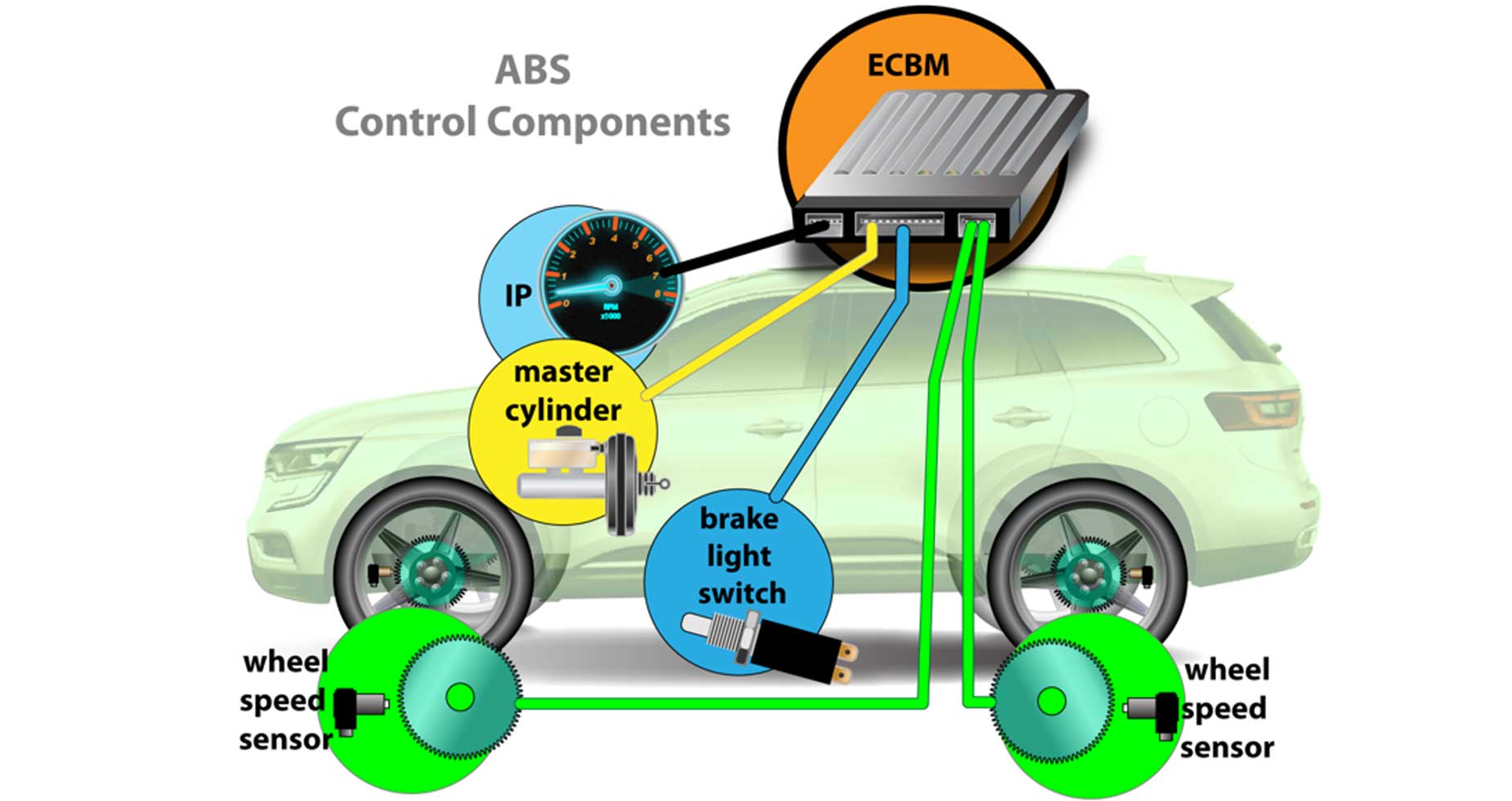In today’s busy traffic with more humans and cars on the road, safety is a definite concern. Behind the scenes, there’s an unsung hero making sure your vehicle responds to your every move and navigates the road with precision. Let’s talk about the Hall Effect sensor – a small yet powerful component that significantly contributes to your vehicle’s safety and performance. This article will dive into wheel speed sensors and highlight the essential role played by Hall Effect sensors in systems like ABS (Anti-lock Braking System) and traction control.
Understanding the Hall Effect Phenomenon
Before we unravel the significance of Hall Effect sensors in the automotive world, let’s grasp the basics of the Hall Effect phenomenon. Named after physicist Edwin Hall, the Hall Effect is the production of a voltage difference (the Hall voltage) across an electrical conductor, transverse to an electric current in the conductor and to an applied magnetic field perpendicular to the current.
In the context of automotive applications, this phenomenon is harnessed to detect the rotational speed of wheels through the use of Hall Effect wheel speed sensors.
The Heart of Precision: Hall Effect Wheel Speed Sensors
Wheel speed sensors, often based on Hall Effect technology, serve as the eyes and ears of a vehicle’s safety systems. These sensors are strategically placed at each wheel and work in tandem with the ABS and traction control systems to monitor individual wheel speeds.
ABS (Anti-lock Braking System):
ABS Components and Functionality:
The Anti-lock Braking System (ABS) is a sophisticated safety feature designed to enhance vehicle control during emergency braking situations. Comprising various components, the ABS system integrates sensors, a control unit, hydraulic modulator, and individual wheel speed sensors to execute its functions seamlessly.

Wheel Speed Sensors: The core of the ABS system lies in the wheel speed sensors, typically utilizing Hall Effect technology. These sensors continuously monitor the rotational speed of each wheel. By generating electrical pulses based on wheel rotation, they provide real-time data to the ABS control unit.
ABS Control Unit: Acting as the brain of the system, the ABS control unit processes information from the wheel speed sensors. It uses this data to assess the speed differential between the wheels and the vehicle’s overall deceleration. When a wheel shows signs of imminent lock-up, the control unit initiates corrective action.
Hydraulic Modulator: This crucial component is responsible for adjusting brake pressure to individual wheels. It consists of valves that regulate the flow of brake fluid. In response to the control unit’s commands, the hydraulic modulator modulates the brake pressure, preventing excessive force on the affected wheel and averting a potential skid.
Operation in Real-Time:
In the event of sudden braking, the ABS system springs into action. When a wheel decelerates too rapidly, indicating a potential lock-up, the ABS control unit intervenes by sending commands to the hydraulic modulator. The modulator, in turn, adjusts the brake pressure to the specific wheel, releasing and reapplying it rapidly.
This dynamic process allows the wheel to maintain rotational motion, preventing it from locking up and the tires from skidding. By preserving optimal traction and steering control, ABS enables the driver to retain command over the vehicle even during hard braking, reducing the risk of accidents and enhancing overall safety.
Traction Control System:
Traction control systems rely on Hall Effect sensors to monitor wheel speeds continuously. When one wheel spins faster than the others, suggesting a loss of traction, the system intervenes by applying brakes selectively to the affected wheel or adjusting engine power to restore balance and prevent wheel spin.
The Working Mechanism of Hall Effect Wheel Speed Sensors
Magnet and Semiconductor Element:
The Hall Effect wheel speed sensors are composed of a small magnet and a semiconductor element. The magnet is securely attached to a rotating part of the wheel, often integrated into the wheel bearing or hub assembly. Meanwhile, the semiconductor element, typically made of gallium arsenide or similar materials, is fixed in a stationary position nearby.
Magnetic Field Generation:
As the wheel rotates, the magnet revolves along with it, inducing a magnetic field around the sensor. The magnetic field lines emanating from the magnet pass through the semiconductor element. The interaction between the moving magnetic field and the semiconductor material creates the Hall Effect.

Hall Effect Principle:
The Hall Effect is a fundamental physics principle that describes the generation of a voltage difference (Hall voltage) across a conductor or semiconductor when it experiences a magnetic field perpendicular to the current flow. In the context of wheel speed sensors, the magnetic field induced by the rotating magnet influences the semiconductor material, causing electrons to be deflected to one side of the semiconductor element.
Voltage Signal Generation:
The deflection of electrons creates an imbalance of charge within the semiconductor element, resulting in a measurable voltage signal. The magnitude of this voltage is directly proportional to the strength of the magnetic field, which, in turn, correlates with the speed of wheel rotation. As the wheel spins faster, the magnetic field changes more rapidly, causing a corresponding increase in the generated voltage signal.
Real-time Data Transmission:
This voltage signal is then transmitted as real-time data to the vehicle’s control systems, including the Anti-lock Braking System (ABS) control unit. The ABS control unit utilizes this information to continuously monitor the rotational speed of each wheel.
Advantages of Hall Effect Wheel Speed Sensors
The implementation of Hall Effect technology in wheel speed sensors offers several advantages:
Precision: Hall Effect sensors provide accurate and reliable measurements of wheel speed, enabling precise control of braking and traction systems.
Durability: With no physical contact between components, Hall Effect sensors are less prone to wear and tear, ensuring long-term reliability.
Compact Size: The compact size of Hall Effect sensors allows for easy integration into the wheel assembly without adding significant weight or bulk.
Low Maintenance: The absence of moving parts reduces the need for frequent maintenance, contributing to the overall longevity of the sensor.
In the intricate tapestry of automotive safety and performance, Hall Effect wheel speed sensors emerge as unsung heroes, silently ensuring the smooth operation of ABS and traction control systems. As technology continues to evolve, these tiny marvels will undoubtedly play an increasingly vital role in shaping the future of automotive safety. So, the next time you hit the brakes or navigate a slippery road with confidence, remember that behind the scenes, Hall Effect sensors are working tirelessly to keep you safe on the journey.











